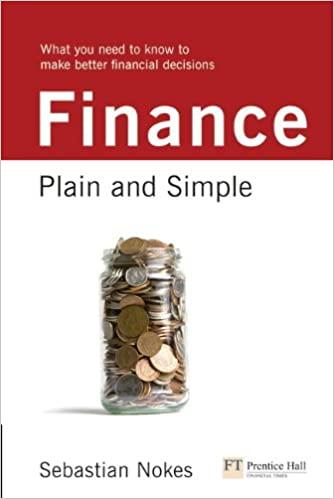Question
May i get a narrated PowerPoint about this term paper The Title is The impact of financial Crisis on the banking industry Introduction Banking industry
May i get a narrated PowerPoint about this term paper
The Title is The impact of financial Crisis on the banking industry
Introduction
Banking industry is thought to be central to business activity. Banking sector faces some time severe crisis due to financial crisis. The after effects of banking crisis are very dangerous. In the situation of financial distress, governments usually come to the rescue, offering emergency liquidity in the form of bailout programs. Over the short term, the financial crisis of 2008 affected the banking sector by causing banks to lose money on mortgage defaults, interbank lending to freeze, and credit to consumers and businesses decreased. For the much longer term, the financial crisis impacted banking by issuing new regulatory actions internationally through Basel III and in the United States through the Dodd-Frank Wall Street Reform and Consumer Protection Act. The financial crisis of US was caused by deregulation in the financial industry. Federal Reserve raised the funds rate as to benefit the economy. Housing prices started to fall down as the supply was more than demand. When the values got out of the hands, banks stopped lending to each other. That was the main reason what created the financial crisis which in turn led to the Great Recession. Major causes of the financial crisis were International trade imbalances, property bubbles, U.S Government housing policies as a result, lending policies etc. Once the recession started, many attempts were taken to bring back the economy in the good state. Many fiscal policies were launched by the government, and monetary policies of Fed were also taken. Measures were taken to help the customers to recover their mortgage debts. The financial crisis of US 2008 affected the banking sector. Many banks lost their money on mortgage defaults due to businesses shutting down, customer credits etc.
Explanation
Before the financial crisis hit in 2008, regulations passed in the U.S was liberal which allowed the banking industry to serve more consumers to buy homes. Starting in 2004, Fannie Mae and Freddie Mac purchased huge numbers of mortgage assets including risky Alt-A mortgages. They charged large fees and received high margins from these subprime mortgages, also using the mortgages as collateral for obtaining private label mortgage based securities.
The financial crisis that began in 2008 decimated the banking sector. A number of banks went under, others had to be bailed out by governments and still others were forced into mergers with stronger partners. The common stocks of banks got crushed, their preferred stocks were also crushed, dividends were slashed and lots of investors lost part or all of their money.
Many foreign banks bought collateralized U.S. debt as subprime mortgage loans were re bundled into collateralized debt obligations and sold to financial institutions around the world. When increasing numbers of U.S. consumers defaulted on their mortgage loans, U.S. banks lost money on the loans, and so did banks in other countries. Banks stopped lending to each other, and it became tougher for consumers and businesses to get credit.
U.S rescission lead to decrease in demand for imported goods, helping to stimulate global recession. Confidence in the economy took a huge drop and so did share prices on stock exchanges worldwide.
In order to reduce other financial crisis, in December of 2009, the international Basel Committee introduced a set of proposals for new capital and liquidity standards for the global banking sector. The reforms, known as Basel III, were passed by the G-20 in November 2010, but the committee left it to member nations to implement the standards in their own countries. In the U.S., the Dodd-Frank Act, passed in 2010, requires bank holding companies with more than $50 million in assets to abide by stringent capital and liquidity standards and it sets new restrictions on incentive compensation.
The legislation also created the Financial Stability Oversight Council, to include the Federal Reserve Bank and other agencies for the purpose of coordinating the regulation of larger, "systemically important" banks. The council can break up large banks that might present risk because of their sizes. A new Orderly Liquidation Fund was established to provide financial assistance for the liquidation of big financial institutions that fall into trouble.
Conclusion
The main force that impacted the crisis was role of the insurance companies like AIG which insured the loans that were taken. Moreover, being a hard core capitalist economy, Government and its control over making the situation better in anyway, was way less than what it should have been. There was absolutely no cover for the ones who lost their money and banks gave up. It was a tough time for the banks during the financial crisis of 2008 as it had adversely affected the banking sector by causing banks to lose money on mortgage defaults, interbank lending to freeze, and credit to consumers and businesses to dry up. This caused a great drop in confidence on the banks and the investors were now extremely worried about the way their business would work. The USA for the first time in history had no credit system for a short term. Banks stopped lending to each other, and it became tougher for consumers and businesses to get credit.
Step by Step Solution
There are 3 Steps involved in it
Step: 1

Get Instant Access to Expert-Tailored Solutions
See step-by-step solutions with expert insights and AI powered tools for academic success
Step: 2

Step: 3

Ace Your Homework with AI
Get the answers you need in no time with our AI-driven, step-by-step assistance
Get Started


